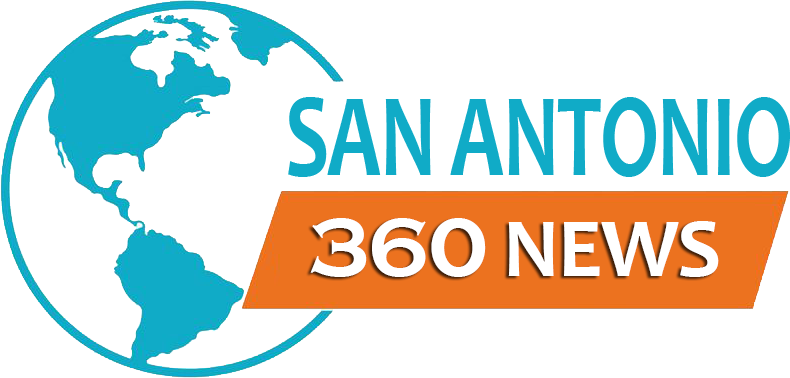In today’s digital landscape, attracting readers to your content requires more than just writing an engaging article. It involves a strategic blend of SEO and content marketing to ensure your article reaches the right audience and stands out in search engine results. This comprehensive guide will walk you through three essential steps to optimize your article for SEO, enhance its visibility, and attract more readers. Let’s dive into these strategies to make your next article a success.
Step 1: Conduct Thorough Keyword Research
Keyword research is the foundation of effective SEO. By identifying the right keywords, you can tailor your content to what users are searching for, increasing the chances of your article ranking higher in search engine results pages (SERPs). Here’s how to conduct thorough keyword research:
1.1. Identify Your Target Audience
Understanding your target audience is crucial for selecting relevant keywords. Consider the following aspects:
- Demographics: Age, gender, location, and other demographic factors.
- Interests: Topics and industries they are interested in.
- Search Intent: The purpose behind their searches, such as seeking information, looking for solutions, or making a purchase.
1.2. Use Keyword Research Tools
Several tools can help you find relevant keywords and analyze their potential. Some popular options include:
- Google Keyword Planner: Provides keyword ideas and search volume data.
- Ahrefs: Offers insights into keyword difficulty, search volume, and related keywords.
- SEMrush: Provides keyword suggestions, competition analysis, and search volume estimates.
- Ubersuggest: Offers keyword ideas and SEO metrics, including competition and search volume.
1.3. Analyze Competitor Content
Analyzing the content of your competitors can reveal valuable keyword opportunities. Identify top-performing articles in your niche and examine the keywords they target. Tools like Ahrefs and SEMrush can help you perform competitive analysis.
1.4. Select Relevant Keywords
Choose keywords that are relevant to your topic and have a good balance of search volume and competition. Focus on a mix of:
- Primary Keywords: Main keywords related to your article’s topic.
- Long-Tail Keywords: Longer, more specific phrases that attract targeted traffic.
- LSI Keywords: Latent Semantic Indexing keywords that are semantically related to your primary keywords.
Step 2: Optimize Your Content for SEO
Once you have your keywords, it’s time to optimize your content. Proper on-page SEO ensures that search engines understand your content and rank it accordingly. Here’s how to optimize your article effectively:
2.1. Craft a Compelling Title
Your title is one of the most important SEO elements. It should be engaging, include your primary keyword, and accurately reflect the content of your article. Aim for:
- Clarity: Ensure the title clearly conveys the topic and value of the article.
- Relevance: Include your primary keyword to improve search engine visibility.
- Engagement: Use compelling language to attract readers' attention.
2.2. Write an Effective Meta Description
The meta description is a brief summary of your article that appears in search engine results. A well-written meta description can entice users to click on your article. Focus on:
- Inclusion of Primary Keyword: Incorporate your main keyword to improve relevance.
- Value Proposition: Highlight the benefits or key points of your article.
- Call-to-Action: Encourage users to click through by using action-oriented language.
2.3. Use Headings and Subheadings
Headings and subheadings (H1, H2, H3, etc.) help organize your content and make it easier to read. They also provide an opportunity to include keywords and improve SEO. Ensure that:
- Headings Are Relevant: Use descriptive headings that reflect the content of each section.
- Keywords Are Incorporated: Include relevant keywords in headings where appropriate.
- Structure Is Logical: Organize headings in a clear hierarchy to improve readability.
2.4. Optimize Content with Keywords
Integrate keywords naturally into your content without keyword stuffing. Focus on:
- Keyword Placement: Include primary and secondary keywords in the introduction, body, and conclusion.
- Natural Flow: Ensure keywords fit seamlessly into the content and maintain readability.
- Synonyms and Variations: Use synonyms and related terms to avoid repetitive language and enhance relevance.
2.5. Enhance Readability and Engagement
User experience plays a crucial role in SEO. Make your content engaging and easy to read by:
- Using Short Paragraphs: Break up text into manageable chunks for better readability.
- Incorporating Bullet Points and Lists: Highlight key information and improve scannability.
- Adding Visuals: Include images, infographics, and videos to make your content more engaging.
2.6. Optimize Images and Alt Text
Images can enhance your content, but they also need to be optimized for SEO. Focus on:
- File Names: Use descriptive file names that include relevant keywords.
- Alt Text: Provide descriptive alt text that includes keywords and explains the image content.
Step 3: Promote Your Content Effectively
Promoting your content is essential for driving traffic and increasing its reach. Here’s how to effectively promote your article:
3.1. Leverage Social Media
Social media platforms offer a powerful way to reach your audience and drive traffic to your article. Strategies include:
- Sharing on Multiple Platforms: Post your article on various social media channels to maximize visibility.
- Engaging with Your Audience: Respond to comments, share updates, and participate in relevant conversations.
- Using Paid Promotions: Consider using paid social media ads to boost visibility and reach a larger audience.
3.2. Utilize Email Marketing
Email marketing is a direct way to reach your subscribers and drive traffic to your article. Consider:
- Newsletter Integration: Include your article in your regular newsletter to keep subscribers informed.
- Segmented Campaigns: Send targeted emails to specific segments of your audience based on their interests.
3.3. Build Backlinks
Backlinks from reputable sites can improve your article’s SEO and drive referral traffic. Strategies include:
- Guest Blogging: Write guest posts for industry blogs and include links to your article.
- Outreach Campaigns: Reach out to influencers, bloggers, and industry experts to promote your content.
- Link Building: Encourage other sites to link to your article through valuable content and resources.
3.4. Engage with Online Communities
Participating in online communities and forums can help you promote your content and drive traffic. Focus on:
- Relevant Forums: Join forums and discussion boards related to your industry.
- Providing Value: Share your article as a resource when relevant and contribute to discussions.
3.5. Monitor and Analyze Performance
Regularly monitor and analyze the performance of your article to assess its effectiveness. Use tools like Google Analytics and social media insights to track:
- Traffic Sources: Identify where your traffic is coming from and adjust your promotional strategies accordingly.
- Engagement Metrics: Analyze metrics such as bounce rate, time on page, and social shares to gauge reader engagement.
- Conversion Rates: Measure the impact of your article on conversions and adjust your approach as needed.
FAQ:
1. What is SEO and why is it important for content marketing?
SEO (Search Engine Optimization) involves optimizing your content to rank higher in search engine results, increasing visibility and driving organic traffic. It’s crucial for content marketing to ensure your articles reach the right audience and attract more readers.
2. How do I conduct keyword research for my article?
Conduct keyword research by identifying your target audience, using keyword research tools (e.g., Google Keyword Planner, Ahrefs), analyzing competitor content, and selecting relevant keywords with a balance of search volume and competition.
3. What are primary and long-tail keywords?
Primary keywords are main terms related to your article’s topic, while long-tail keywords are longer, more specific phrases that attract targeted traffic and are less competitive.
4. How should I optimize my article’s title for SEO?
Craft a compelling title by including your primary keyword, making it clear and relevant, and using engaging language to attract readers' attention.
5. What is a meta description and how does it affect SEO?
A meta description is a brief summary of your article that appears in search results. It affects SEO by influencing click-through rates and should include your primary keyword, value proposition, and a call-to-action.
6. How can I improve the readability of my article?
Enhance readability by using short paragraphs, bullet points, lists, and incorporating visuals. Ensure your content is well-organized and easy to scan.
7. What is the importance of image optimization in SEO?
Image optimization improves SEO by making images more discoverable to search engines. Use descriptive file names and alt text to enhance relevance and accessibility.
8. How can I promote my article effectively?
Promote your article by leveraging social media, utilizing email marketing, building backlinks, engaging with online communities, and analyzing performance to adjust strategies.
9. What are backlinks and how do they impact SEO?
Backlinks are links from other websites to your content. They impact SEO by improving your article’s authority and search engine ranking. Aim to acquire backlinks from reputable and relevant sites.
10. How can I measure the success of my content marketing efforts?
Measure success by analyzing metrics such as traffic sources, engagement rates, conversion rates, and performance insights using tools like Google Analytics and social media insights.
Get in Touch
Website – https://www.webinfomatrix.com
Mobile - +91 9212306116
Whatsapp – https://call.whatsapp.com/voice/9rqVJyqSNMhpdFkKPZGYKj
Skype – shalabh.mishra
Telegram – shalabhmishra
Email - info@webinfomatrix.com

.jpg)






 English (US) ·
English (US) ·